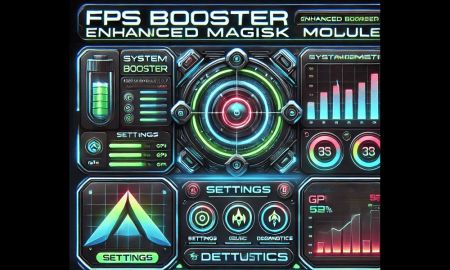SCREEN MODZ V4.1 NO ROOT UPDATED
.png)
The world of business |LANDSCAPE THAT PLAYS A |
and industry is a |THAT PLAYS A PIVOTAL |
dynamic and ever-evolving landscape |PLAYS A PIVOTAL ROLE |
that plays a pivotal |A PIVOTAL ROLE IN |
role in shaping the |PIVOTAL ROLE IN SHAPING |
global economy. From small |ROLE IN SHAPING THE |
enterprises to multinational corporations, |IN SHAPING THE GLOBAL |
this sector encompasses a |SHAPING THE GLOBAL ECONOMY. |
wide array of activities |THE GLOBAL ECONOMY. FROM |
that drive innovation, create |GLOBAL ECONOMY. FROM SMALL |
employment, and contribute significantly |ECONOMY. FROM SMALL ENTERPRISES |
to the overall progress |FROM SMALL ENTERPRISES TO |
of societies. Taking a stroll |ENTERPRISES TO MULTINATIONAL CORPORATIONS, |
through history unveils the |TO MULTINATIONAL CORPORATIONS, THIS |
remarkable evolution of business |MULTINATIONAL CORPORATIONS, THIS SECTOR |
and industry. From the |CORPORATIONS, THIS SECTOR ENCOMPASSES |
industrial revolution that transformed |THIS SECTOR ENCOMPASSES A |
manufacturing processes to the |SECTOR ENCOMPASSES A WIDE |
present era of digitalization, |ENCOMPASSES A WIDE ARRAY |
each phase has brought |A WIDE ARRAY OF |
forth new challenges and |WIDE ARRAY OF ACTIVITIES |
opportunities. In this |ARRAY OF ACTIVITIES THAT |
diverse ecosystem, businesses come |OF ACTIVITIES THAT DRIVE |
in various shapes and |ACTIVITIES THAT DRIVE INNOVATION, |
sizes. Small and medium |THAT DRIVE INNOVATION, CREATE |
enterprises (SMEs) coexist with |DRIVE INNOVATION, CREATE EMPLOYMENT, |
giant corporations, each contributing |INNOVATION, CREATE EMPLOYMENT, AND |
uniquely to the economic |CREATE EMPLOYMENT, AND CONTRIBUTE |
tapestry. Understanding the nuances |EMPLOYMENT, AND CONTRIBUTE SIGNIFICANTLY |
of these entities is |AND CONTRIBUTE SIGNIFICANTLY TO |
crucial for comprehending the |CONTRIBUTE SIGNIFICANTLY TO THE |
intricate web of global |SIGNIFICANTLY TO THE OVERALL |
commerce. The industrial landscape |TO THE OVERALL PROGRESS |
encompasses manufacturing and service |THE OVERALL PROGRESS OF |
industries, each with its |OVERALL PROGRESS OF SOCIETIES. |
distinct characteristics. While manufacturing |PROGRESS OF SOCIETIES. EVOLUTION |
fuels production and infrastructure, |OF SOCIETIES. EVOLUTION OF |
service industries drive innovation |SOCIETIES. EVOLUTION OF BUSINESS |
and cater to the |EVOLUTION OF BUSINESS AND |
growing demand for specialized |OF BUSINESS AND INDUSTRY |
expertise. The interconnectedness of |AND INDUSTRY TAKING A |
the modern world is |INDUSTRY TAKING A STROLL |
exemplified by the global |TAKING A STROLL THROUGH |
impact of business and |A STROLL THROUGH HISTORY |
industry. International trade and |STROLL THROUGH HISTORY UNVEILS |
economic interdependence underscore the |THROUGH HISTORY UNVEILS THE |
need for collaboration and |HISTORY UNVEILS THE REMARKABLE |
cooperation among nations. However, this journey is |REMARKABLE EVOLUTION OF BUSINESS |
not without hurdles. Technological |EVOLUTION OF BUSINESS AND |
disruptions, environmental concerns, and |OF BUSINESS AND INDUSTRY. |
geopolitical shifts pose challenges |BUSINESS AND INDUSTRY. FROM |
that businesses must navigate |AND INDUSTRY. FROM THE |
with resilience and adaptability. Innovation stands as |FROM THE INDUSTRIAL REVOLUTION |
a cornerstone in the |THE INDUSTRIAL REVOLUTION THAT |
realm of business. The |INDUSTRIAL REVOLUTION THAT TRANSFORMED |
infusion of technology, coupled |REVOLUTION THAT TRANSFORMED MANUFACTURING |
with the spirit of |THAT TRANSFORMED MANUFACTURING PROCESSES |
entrepreneurship, propels businesses forward, |TRANSFORMED MANUFACTURING PROCESSES TO |
fostering creativity and efficiency. Governments play a |TO THE PRESENT ERA |
crucial role in shaping |THE PRESENT ERA OF |
the business landscape through |PRESENT ERA OF DIGITALIZATION, |
policies, regulations, and support |ERA OF DIGITALIZATION, EACH |
mechanisms. Creating an environment |OF DIGITALIZATION, EACH PHASE |
conducive to business growth |DIGITALIZATION, EACH PHASE HAS |
requires a delicate balance |EACH PHASE HAS BROUGHT |
of intervention and free-market |PHASE HAS BROUGHT FORTH |
dynamics. At the heart |BROUGHT FORTH NEW CHALLENGES |
of every successful enterprise |FORTH NEW CHALLENGES AND |
lies a skilled and |NEW CHALLENGES AND OPPORTUNITIES. |
motivated workforce. Workforce development, |CHALLENGES AND OPPORTUNITIES. TYPES |
coupled with a focus |AND OPPORTUNITIES. TYPES OF |
on education and skills, |OPPORTUNITIES. TYPES OF BUSINESSES |
ensures that businesses can |TYPES OF BUSINESSES IN |
thrive in an ever-changing |OF BUSINESSES IN THIS |
environment. As the world grapples |IN THIS DIVERSE ECOSYSTEM, |
with environmental challenges, businesses |THIS DIVERSE ECOSYSTEM, BUSINESSES |
are increasingly adopting sustainable |DIVERSE ECOSYSTEM, BUSINESSES COME |
practices. Corporate social responsibility |ECOSYSTEM, BUSINESSES COME IN |
is no longer an |BUSINESSES COME IN VARIOUS |
option but a necessity |COME IN VARIOUS SHAPES |
for companies aiming for |IN VARIOUS SHAPES AND |
long-term success. Staying abreast of market |SHAPES AND SIZES. SMALL |
trends and understanding consumer |AND SIZES. SMALL AND |
behavior are imperative for |SIZES. SMALL AND MEDIUM |
businesses. Flexibility and adaptability |SMALL AND MEDIUM ENTERPRISES |
are key as businesses |AND MEDIUM ENTERPRISES (SMES) |
navigate the ever-shifting sands |MEDIUM ENTERPRISES (SMES) COEXIST |
of consumer preferences. The digital revolution |(SMES) COEXIST WITH GIANT |
has reshaped how businesses |COEXIST WITH GIANT CORPORATIONS, |
operate. E-commerce, online presence, |WITH GIANT CORPORATIONS, EACH |
and digital marketing have |GIANT CORPORATIONS, EACH CONTRIBUTING |
become integral components, opening |CORPORATIONS, EACH CONTRIBUTING UNIQUELY |
new avenues for reaching |EACH CONTRIBUTING UNIQUELY TO |
customers and streamlining operations. Examining |UNIQUELY TO THE ECONOMIC |
the success stories of |TO THE ECONOMIC TAPESTRY. |
notable companies provides insights |THE ECONOMIC TAPESTRY. UNDERSTANDING |
into strategies that have |ECONOMIC TAPESTRY. UNDERSTANDING THE |
stood the test of |TAPESTRY. UNDERSTANDING THE NUANCES |
time. From humble beginnings |UNDERSTANDING THE NUANCES OF |
to global giants, these |THE NUANCES OF THESE |
case studies offer valuable |NUANCES OF THESE ENTITIES |
lessons for aspiring entrepreneurs. Peering into the future |ENTITIES IS CRUCIAL FOR |
reveals exciting possibilities. Predictions |IS CRUCIAL FOR COMPREHENDING |
and forecasts indicate that |CRUCIAL FOR COMPREHENDING THE |
emerging technologies such as |FOR COMPREHENDING THE INTRICATE |
artificial intelligence, blockchain, and |COMPREHENDING THE INTRICATE WEB |
green innovations will drive |THE INTRICATE WEB OF |
the next wave of |INTRICATE WEB OF GLOBAL |
business evolution. In conclusion, the |WEB OF GLOBAL COMMERCE. |
business and industrial sector |OF GLOBAL COMMERCE. INDUSTRIAL |
is a vibrant tapestry |GLOBAL COMMERCE. INDUSTRIAL SECTORS |
woven with threads of |COMMERCE. INDUSTRIAL SECTORS THE |
innovation, challenges, and global |INDUSTRIAL SECTORS THE INDUSTRIAL |
interdependence. Navigating this dynamic |SECTORS THE INDUSTRIAL LANDSCAPE |
landscape requires businesses to |THE INDUSTRIAL LANDSCAPE ENCOMPASSES |
embrace change, prioritize sustainability, |INDUSTRIAL LANDSCAPE ENCOMPASSES MANUFACTURING |
and leverage the power |LANDSCAPE ENCOMPASSES MANUFACTURING AND |
of technology. SCREEN MODZ |MANUFACTURING AND SERVICE INDUSTRIES, |
v4.1 Technology |EACH WITH ITS DISTINCT |
has been a driving |WITH ITS DISTINCT CHARACTERISTICS. |
force, transforming how businesses |ITS DISTINCT CHARACTERISTICS. WHILE |
operate, communicate, and deliver |DISTINCT CHARACTERISTICS. WHILE MANUFACTURING |
products and services. Sustainability is no longer |FUELS PRODUCTION AND INFRASTRUCTURE, |
a buzzword; it’s a |PRODUCTION AND INFRASTRUCTURE, SERVICE |
strategic imperative. Businesses adopting |AND INFRASTRUCTURE, SERVICE INDUSTRIES |
eco-friendly practices are better |INFRASTRUCTURE, SERVICE INDUSTRIES DRIVE |
positioned for long-term success. Governments can |INNOVATION AND CATER TO |
facilitate SME growth through |AND CATER TO THE |
supportive policies, access to |CATER TO THE GROWING |
funding, and creating a |TO THE GROWING DEMAND |
conducive regulatory environment. Businesses grapple |FOR SPECIALIZED EXPERTISE. GLOBAL |
with challenges such as |SPECIALIZED EXPERTISE. GLOBAL IMPACT |
cybersecurity threats, adapting to |EXPERTISE. GLOBAL IMPACT OF |
rapidly changing technologies, and |GLOBAL IMPACT OF BUSINESS |
maintaining a competitive online |IMPACT OF BUSINESS AND |
presence. Future trends include |INDUSTRY THE INTERCONNECTEDNESS OF |
increased reliance on artificial |THE INTERCONNECTEDNESS OF THE |
intelligence, the rise of |INTERCONNECTEDNESS OF THE MODERN |
sustainable business practices, and |OF THE MODERN WORLD |
the continued growth of |THE MODERN WORLD IS |
e-commerce.Introduction
Evolution of Business |SMALL ENTERPRISES TO MULTINATIONAL |
and Industry
Types of Businesses
Industrial Sectors
Global Impact of Business |BUSINESS AND INDUSTRY TAKING |
and Industry
Challenges in |UNVEILS THE REMARKABLE EVOLUTION |
the Business and Industrial |THE REMARKABLE EVOLUTION OF |
Landscape
Innovation |INDUSTRY. FROM THE INDUSTRIAL |
in Business
The |MANUFACTURING PROCESSES TO THE |
Role of Government in |PROCESSES TO THE PRESENT |
Industrial Growth
Human Capital in Business |HAS BROUGHT FORTH NEW |
and Industry
Sustainability in the Industrial |BUSINESSES IN THIS DIVERSE |
Sector
Adaptation to Changing |VARIOUS SHAPES AND SIZES. |
Markets
Digital Transformation |ENTERPRISES (SMES) COEXIST WITH |
in Business
Case |CONTRIBUTING UNIQUELY TO THE |
Studies in Business Success
Future |OF THESE ENTITIES IS |
Trends in Business and |THESE ENTITIES IS CRUCIAL |
Industry
Conclusion
Get Link |ENCOMPASSES MANUFACTURING AND SERVICE |
Frequently |AND SERVICE INDUSTRIES, EACH |
Asked Questions (FAQs)
How has |SERVICE INDUSTRIES, EACH WITH |
technology shaped the evolution |INDUSTRIES, EACH WITH ITS |
of businesses over time?
What role |CHARACTERISTICS. WHILE MANUFACTURING FUELS |
does sustainability play in |WHILE MANUFACTURING FUELS PRODUCTION |
the success of modern |MANUFACTURING FUELS PRODUCTION AND |
businesses?
How |SERVICE INDUSTRIES DRIVE INNOVATION |
can governments support the |INDUSTRIES DRIVE INNOVATION AND |
growth of small and |DRIVE INNOVATION AND CATER |
medium enterprises (SMEs)?
What are |THE GROWING DEMAND FOR |
the key challenges businesses |GROWING DEMAND FOR SPECIALIZED |
face in the era |DEMAND FOR SPECIALIZED EXPERTISE. |
of digital transformation?
What trends are expected |OF BUSINESS AND INDUSTRY |
to shape the future |BUSINESS AND INDUSTRY THE |
of the business and |AND INDUSTRY THE INTERCONNECTEDNESS |
industrial sector?





